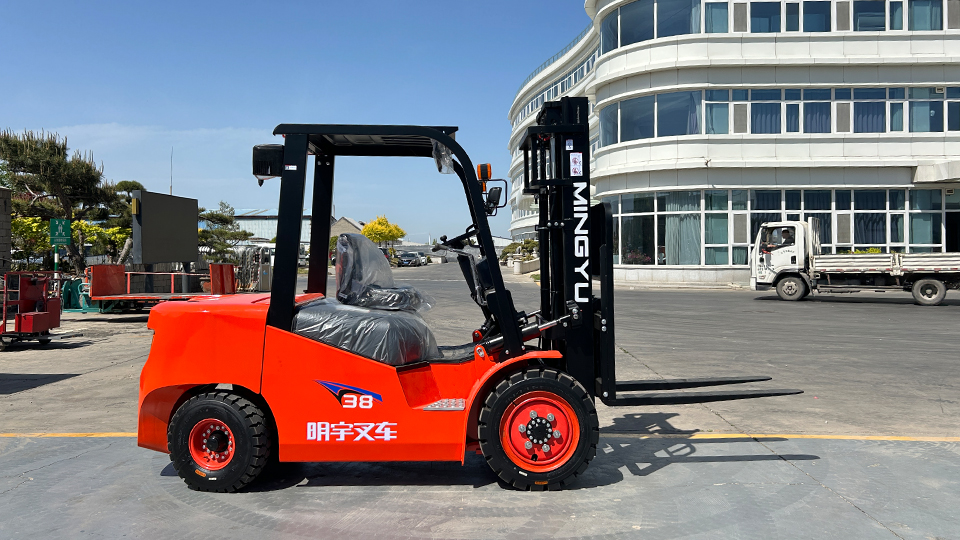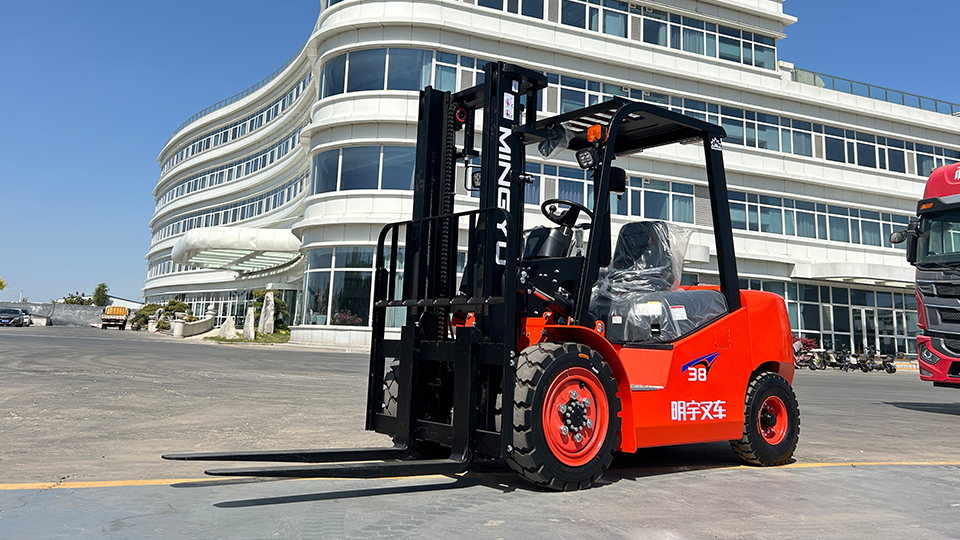
Introduction
Operating a forklift on an incline introduces unique challenges and risks that are not present on level ground. One of the most critical factors to consider is how the angle of the incline affects the forklift's lifting capacity. Understanding and calculating the de-rated capacity of a forklift on an incline is essential for ensuring the safety of the operator, the load, and the surrounding environment. This article will provide a comprehensive guide on how the angle of the incline impacts the lifting capacity, covering the necessary formulas, practical steps, and safety considerations.
Understanding Forklift Stability
Before diving into the calculations, it's important to understand the principles of forklift stability. A forklift's stability is determined by its center of gravity (CG) and the stability triangle, an imaginary three-point support system formed by the front wheels and the center of the rear axle. On level ground, the CG is within the stability triangle, ensuring equilibrium. However, when a forklift travels on an incline, the CG shifts, altering the stability dynamics.

The Physics of Stability on an Incline
When a forklift ascends or descends a ramp, the angle of the incline causes the weight to be redistributed, moving the CG closer to the tip of the stability triangle. This shift can be calculated using trigonometric functions. The key concept to grasp is the "tip-over" point, where the line of action of the combined weight of the forklift and its load falls outside the stability triangle, causing the forklift to become unstable and potentially tip over.
Calculating the De-Rated Capacity
To calculate the de-rated capacity of a forklift on an incline, you need to consider the angle of the incline and the rated capacity of the forklift on level ground. The formula for calculating the de-rated capacity is:
De-rated Capacity=Rated Capacity×cos(θ)
Where:
Rated Capacity is the maximum lifting capacity of the forklift on level ground.
θ (theta) is the angle of the incline in degrees.
Step-by-Step Calculation
Determine the Rated Capacity: This is the maximum weight the forklift can lift on level ground. This information can be found on the forklift's capacity plate or in the manufacturer's documentation.
Measure the Incline Angle: Use a clinometer or a smartphone app to measure the angle of the incline. Ensure the measurement is accurate.
Convert the Angle to Radians: Trigonometric functions in most calculators use radians, so you need to convert the angle from degrees to radians. The conversion formula is:
Radians=Degrees×(
180
π
)
Calculate the Cosine of the Angle: Use a calculator to find the cosine of the angle in radians.
Apply the Formula: Multiply the rated capacity by the cosine of the angle to get the de-rated capacity.
Example Calculation
Let's assume you have a forklift with a rated capacity of 5,000 lbs, and you need to calculate the de-rated capacity for an incline with an angle of 10 degrees.
Rated Capacity: 5,000 lbs
Incline Angle: 10 degrees
Convert to Radians:
Radians=10×(
180
π
)≈0.1745 radians
Calculate the Cosine:
cos(0.1745)≈0.9848
De-Rated Capacity:
De-rated Capacity=5,000×0.9848≈4,924 lbs
So, the de-rated capacity of the forklift on a 10-degree incline is approximately 4,924 lbs.
Practical Considerations
Operator Training: Ensure that all operators are trained to understand the implications of de-rated capacity and how to operate safely on inclines.
Load Management: Always check the load weight before lifting. Overloading the forklift can lead to instability and accidents.

Ramp Surface: Ensure the ramp is free of debris, oil, or water to maintain traction and prevent slipping.
Speed Control: Maintain a slow, steady speed to prevent sudden shifts in the load or loss of control.
Fork Position: Tilt the forks back slightly to secure the load and raise them just enough to clear the ground.
Safety Protocols for Incline Operation
Ascending an Incline: When ascending without a load, travel with the forks pointing downhill. When ascending with a load, travel with the load pointing uphill.
Descending an Incline: When descending without a load, travel with the forks pointing downhill. When descending with a load, travel with the load pointing uphill.
No Turning on an Incline: Avoid turning on an incline as it can cause the forklift to tip over. If a turn is necessary, drive to the top or bottom of the ramp and make the turn on a level surface.
No Unnecessary Stopping: Avoid stopping on an incline whenever possible. If a stop is necessary, engage the parking brake and ensure the load is stable before proceeding.
Conclusion
Calculating the de-rated capacity of a forklift on an incline is a critical step in ensuring safe and efficient operation. By understanding the principles of forklift stability, using the correct formula, and following established safety protocols, operators can mitigate the risks associated with incline operation. Regular training and adherence to best practices are essential for maintaining a safe working environment.
Name: selena
Mobile:+86-13176910558
Tel:+86-0535-2090977
Whatsapp:8613181602336
Email:vip@mingyuforklift.com
Add:Xiaqiu Town, Laizhou, Yantai City, Shandong Province, China